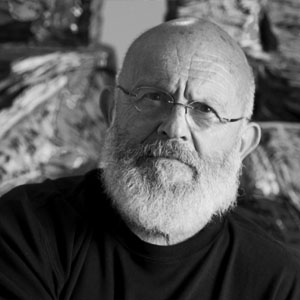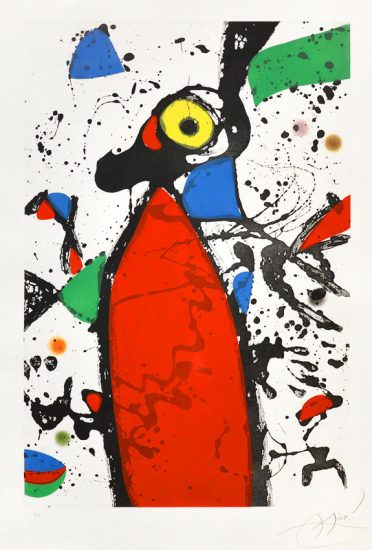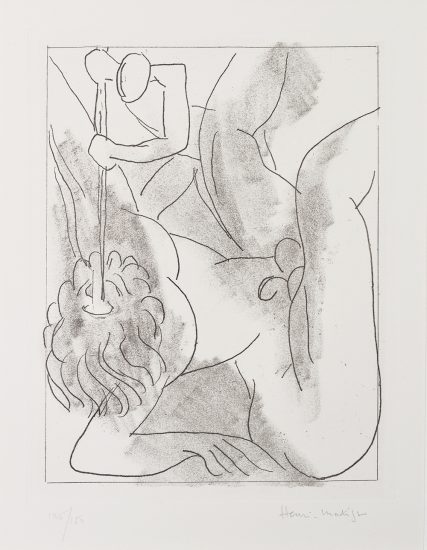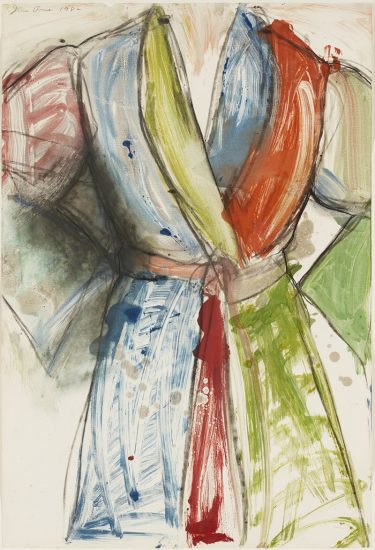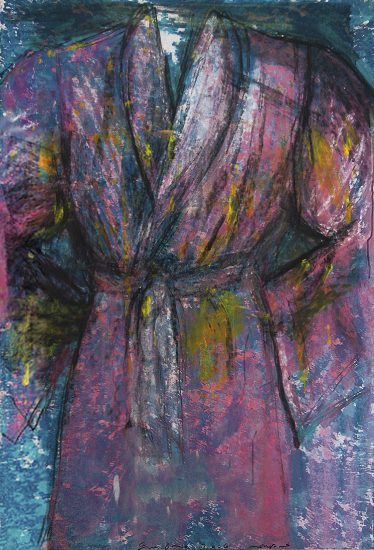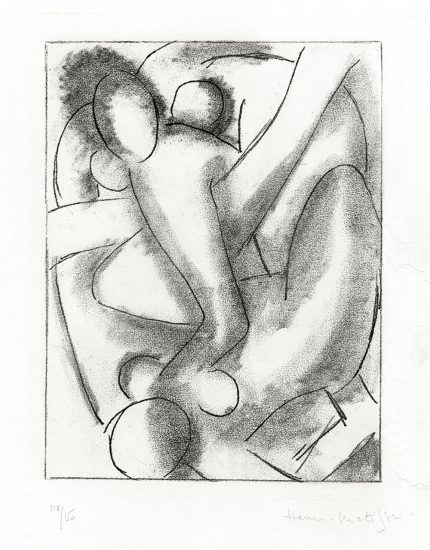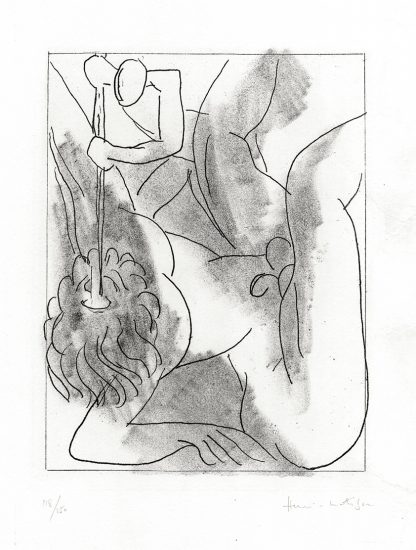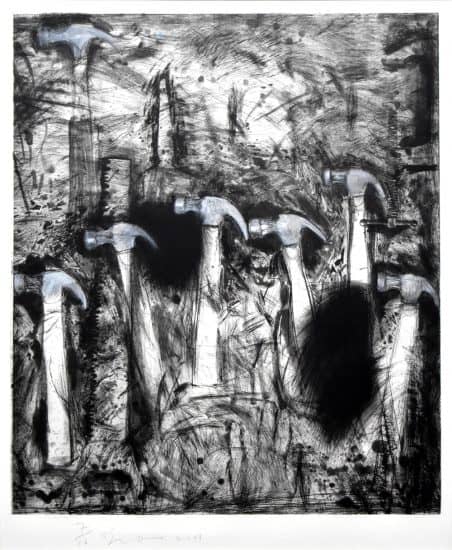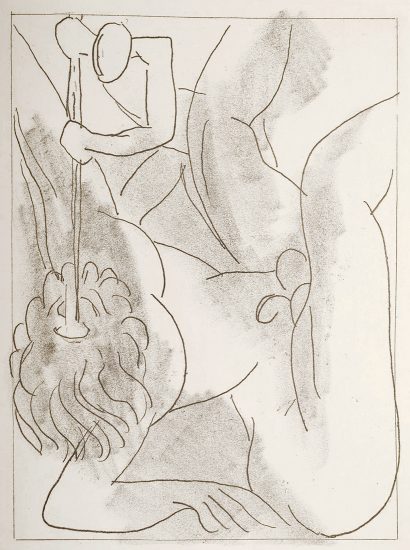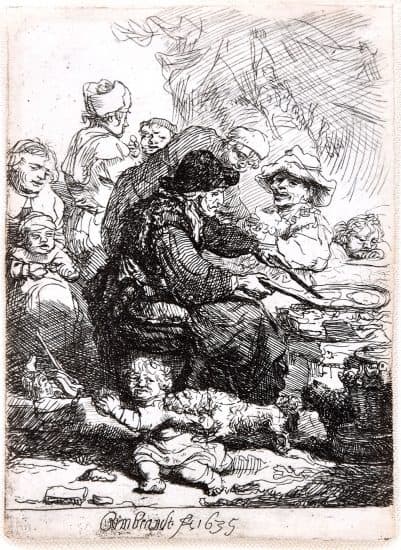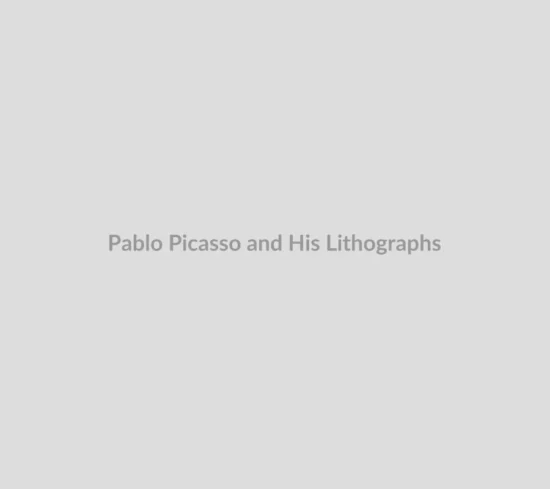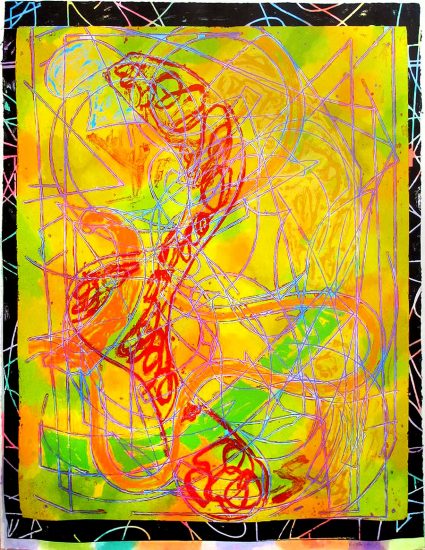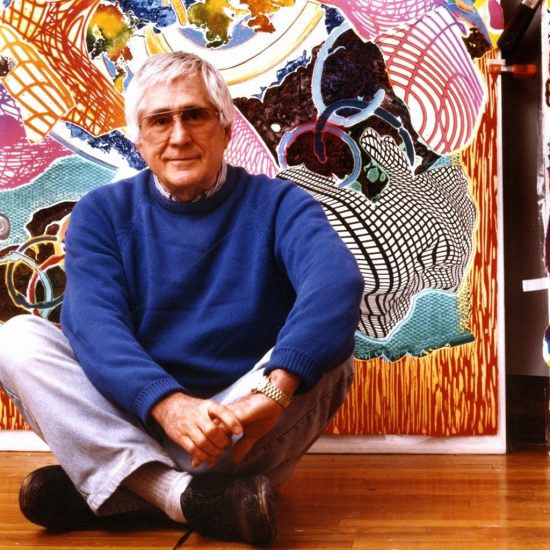Collograph
A collograph is print made from a collage. This printing method is usually used in combination with other printing methods. It was most likely invented in the 19th century.
Intaglio Prints
Intaglio, coming from the Italian word meaning “to cut into”, is a broad category of printmaking created by incising lines and depressions into a plate and inking it. The lines and depressions are created with acid. The plates are then wiped clean, and the ink remaining in the lines and depressions is transferred to the paper. All intaglio printing methods have a plate mark.
Etching
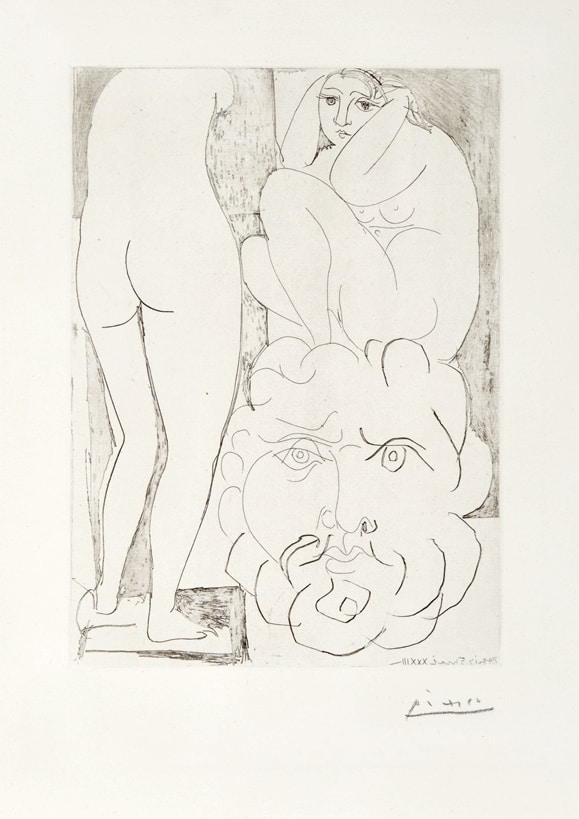
Etching is an intaglio printing method in which a metal plate plate is covered with an acid-resistant ground surface. The artist then carves into the ground surface and when the acid is applied, it bites into the metal plate through the gaps in the ground surface. The longer the plate sits in the acid, the darker the resulting coloration.
Hard Ground Etching
Using a pointed tool to draw, the resulting lines are thinner and wirier.
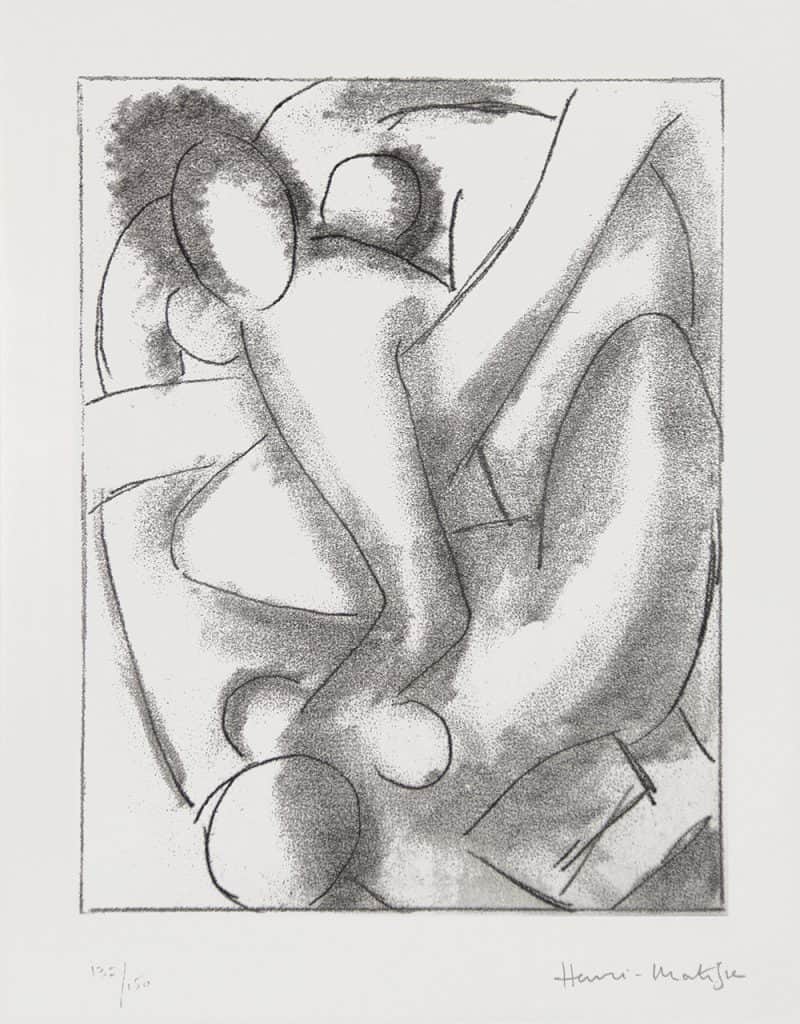
Soft Ground Etching
The artist draws on paper, which covers a thin layer of wax. The resulting lines are softer and wider, more like crayons. This technique is also used for other objects which can be pressed into wax and their likeness captured.
Aquatint
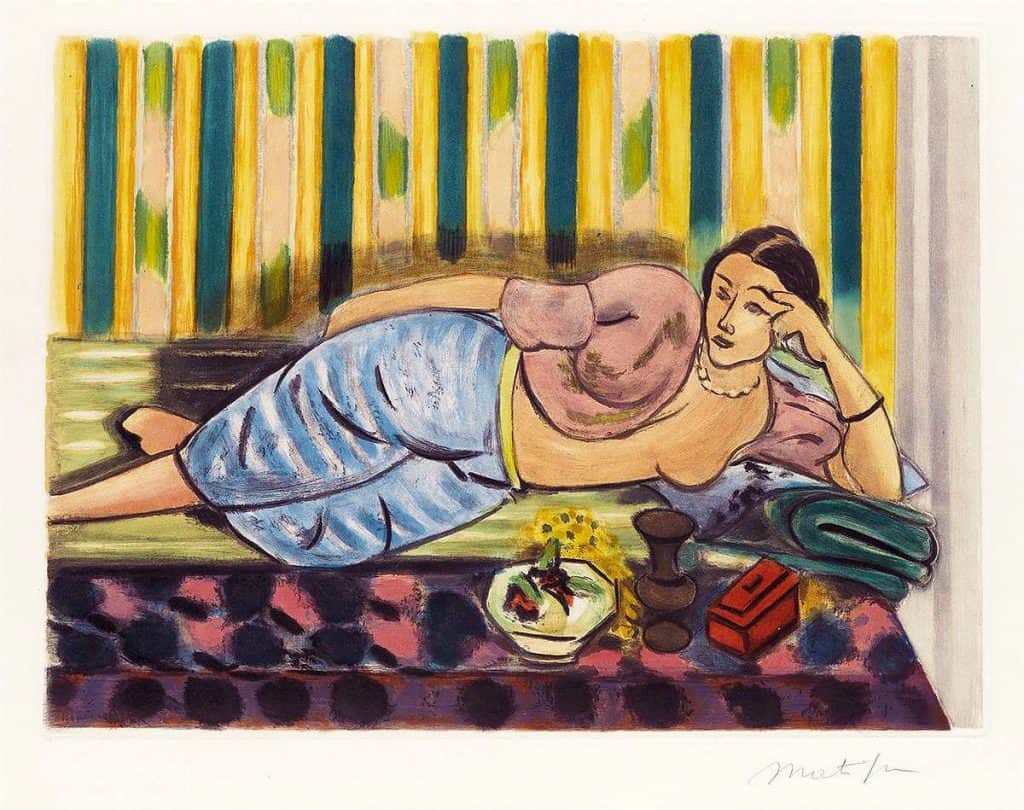
Aquatint is often used in combination with etching or other printing methods. Aquatint is used for creating tonality in prints. The surface of the metal plate is partially covered in particles of rosin. When the acid is applied, it bites at the uncovered areas, creating pits in the plate. The longer that the plate is left in the acid, the deeper the pits become and as a result, the deeper the colors when printed.
Embossing
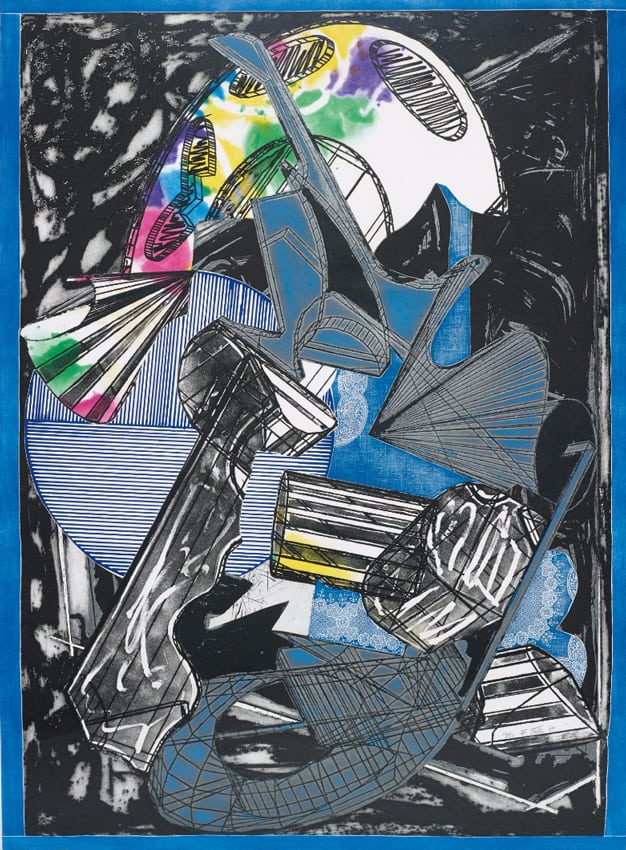
Embossing used the same technique as etching described above. The metal plate is covered in an acid-resistant surface which is incised. As acid is applied to the plate, it moves through incisions in the ground surface and bites into the metal plate below. Instead of inking the plate, the plate is left uninked in embossing, and the resulting print shows raised areas instead of inked images.
Tool-created prints
Separate from intaglio prints which use acid to create the image on the plate, tool-created prints instead use tools to carve into the surface of the plate.
Engraving
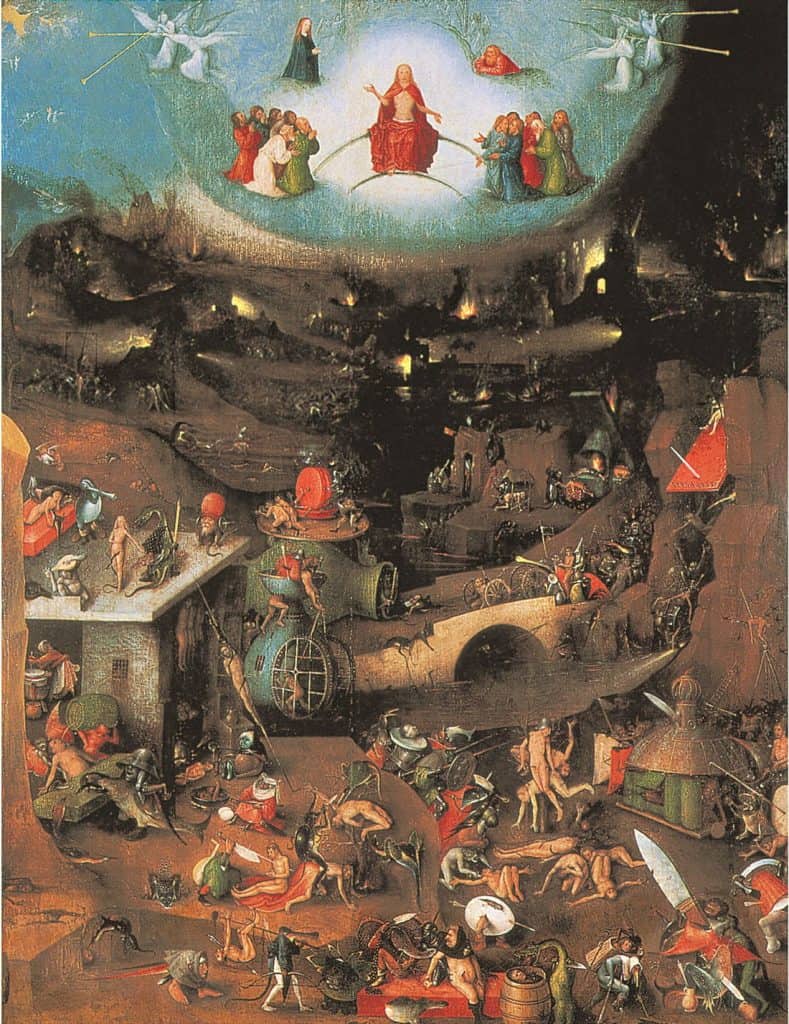
Engravings are made by carving into the surface of the plate with a steel tool called a ‘burin’. The artist handles the burin by pushing away from their body to carve into the metal – not necessarily the most natural technique. The resulting lines are distinct for being very sharp and clean. Crosshatching can be used to produce shading and tone. Engravings hold up well to printing and can create a couple hundred very good impressions after which thousands of impressions can be printed in decreasing quality.
Drypoint
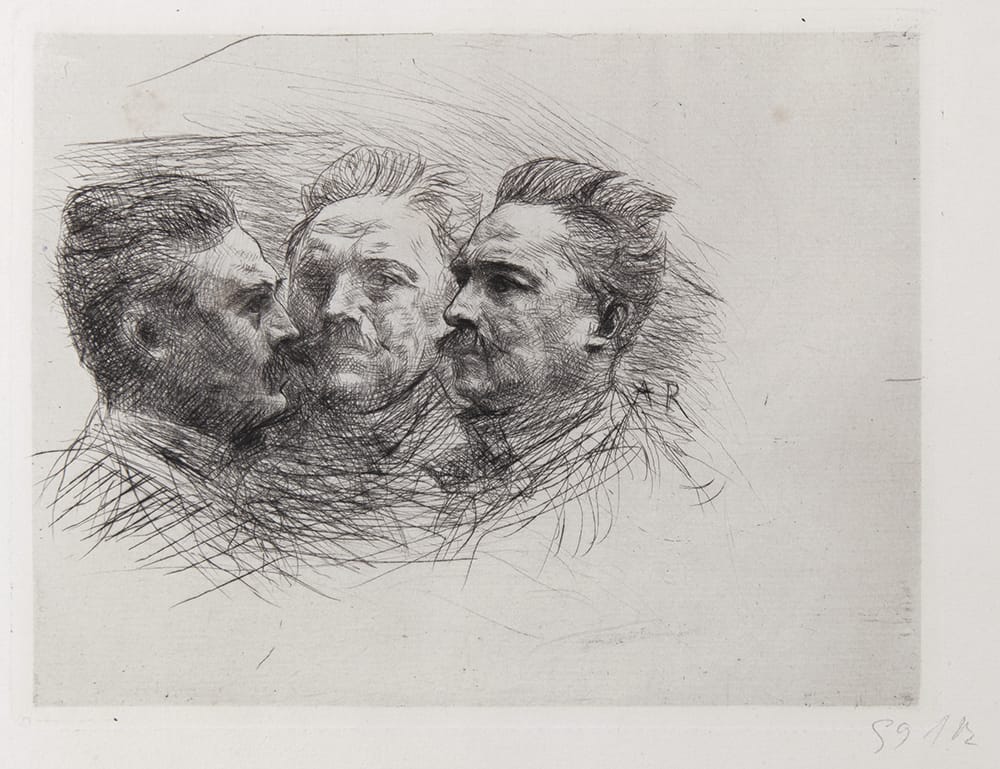
Drypoint is similar to engraving, but instead of using a burin, drypoint uses a steel needle or any sharp object. The resulting lines are rougher than with engravings, because instead of removing metal, the artist is creating a burr, or ridge of metal. This creates a distinctly fuzzy image. As with other types of incision, the deeper the line the darker the resulting print. Drypoint makes 10-15 good impressions before the burr is flattened.
Mezzotint
A mezzotint is created in a two stage process. In the first stage, a metal tool called a "rocker" is applied across the surface of the plate so as to create fine dots. Second, a burnisher or scraper is used to smooth the surface in places that the artist wants to highlight. This technique can result in delicate tonal differences, but this can be very difficult to achieve. The plate does not last very long until it has been worn down.
Lithograph
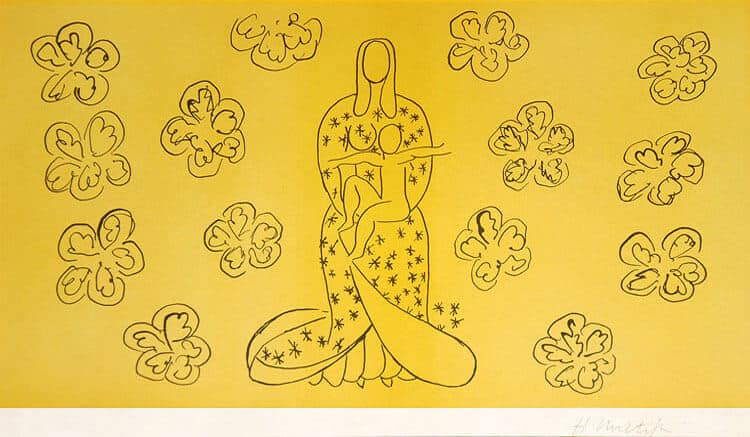
From the ancient Greek word lithos meaning stone, lithography began with the use of limestone blocks. Lithography is based on the repellency of water and grease. Limestone or metal is wetted and then the image is drawn on with greasy crayon and etched using acid to remain on the plate. Afterwards, a sheet is pressed to the stone, resulting in an image. Stones can be ground down and used many times, but metal plates are more popular now for their durability.
Collotype
A collotype is created by pouring a layer of gelatin and potassium chromate over a zinc or glass plate. The plate then receives an image by being exposed to light. The gelatin layer hardens with more exposure to light, and the portions that remain unexposed remain soft and pliable. Ink is then applied to the plate. The driest, hardest areas print the darkest. This technique is particularly applicable for reproducing the look of watercolor.
Offset Lithography
This technique holds similarities to a regular lithograph, with the image and text being transferred onto the plate with the same technique that is based in the repellency of water and grease. After this, a roller is used to pick up the image and transfer it to paper. Offset lithography is used in commercial printing because the process of using multiple rollers increased the speed of the lithographic printing process.
Relief Print
A relief print differs from the above printing methods in that the image is created from whatever is not cut away from the ground matrix- in other words, a relief print functions like a stamp.
Woodcut
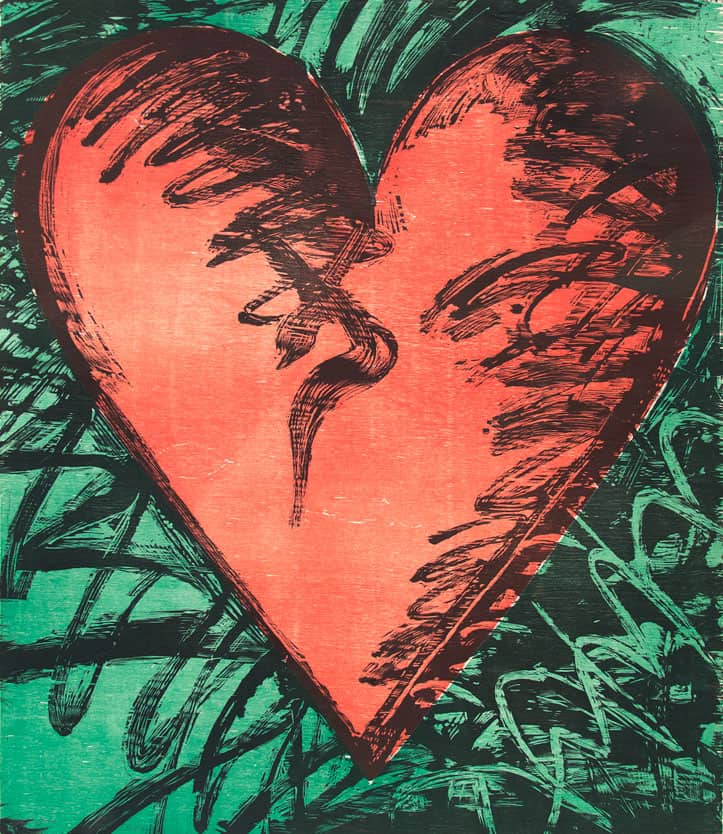
A woodcut is a relief printing method where the artist draws on wood and the “non-image” area are cut away, leaving behind an image that is inked and subsequently printed. When cut along the grain, the woodcut can stand up to a few hundred good impressions, and then many thousands more of decreasing and lesser quality.
Wood Engraving
The tools used to produce wood engravings are similar to those that are used in metal engraving. Working on end-grain blocks of wood, the artist will carve away at the surface. However, despite the similarity of the tools to metal engraving, this remains a relief printing process, and the surface that has not been cut by tools is the one that is printed.
Linocut
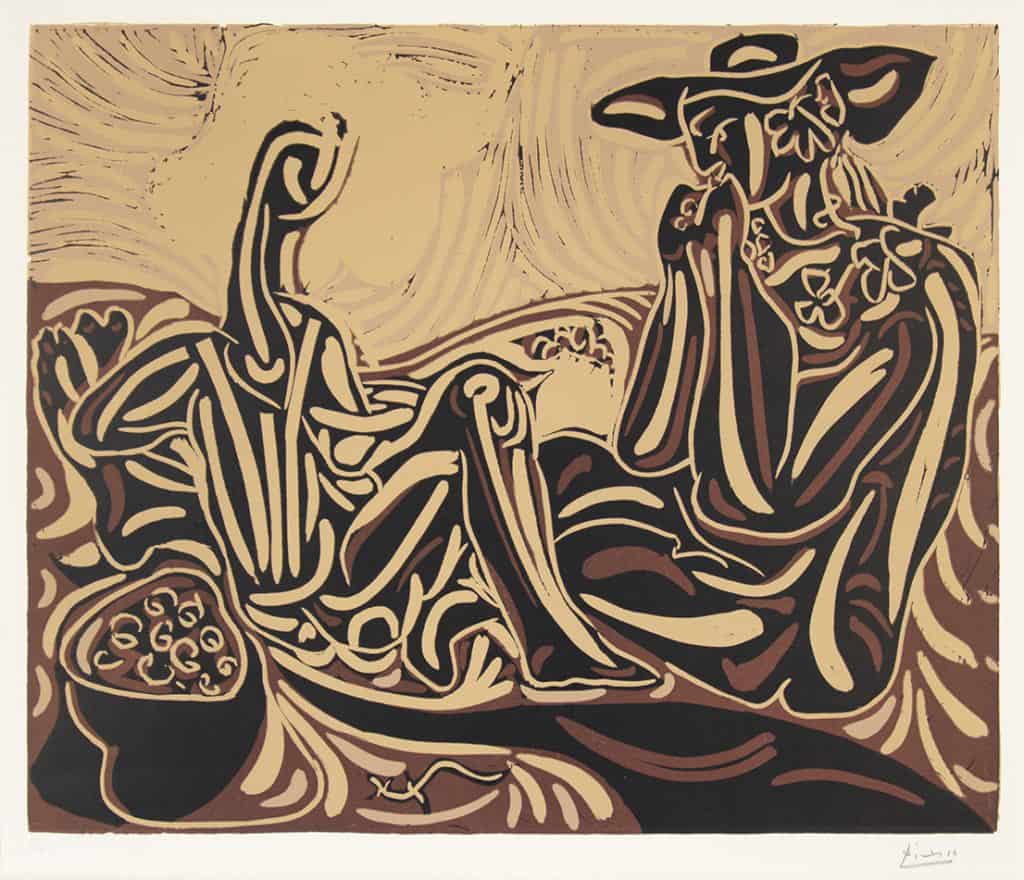
A linocut is the same as a woodcut but the matrix is linoleum, a softer and much more pliable material. Because it is easier to carve, it is used more readily in teaching print making.
Monotype
In this type of printmaking, the artist will draw in ink or paint onto a smooth surface. Then, while the ink is still wet, a piece of paper will be applied to the surface and pressed so as to transfer the ink or paint to the paper. Because of the technique, monotypes usually produce a single impression, but occasionally a second, weaker impression can be made.
Screenprint
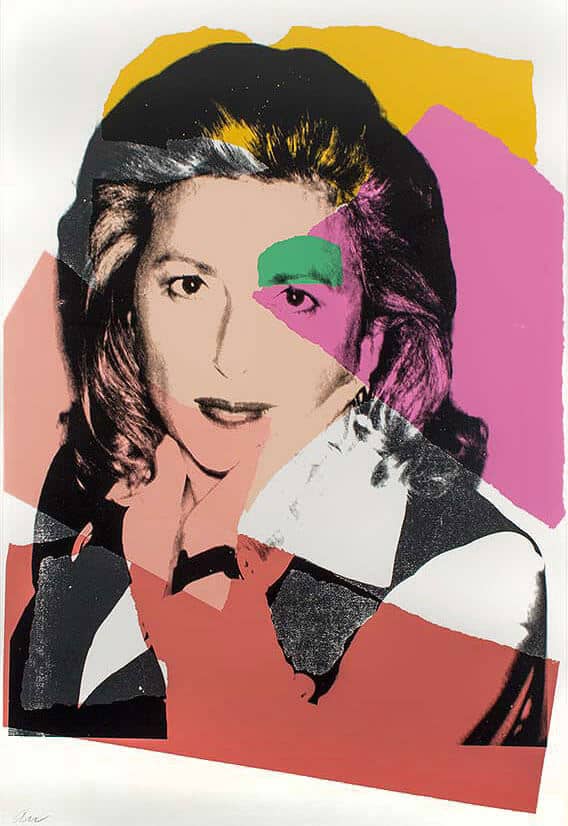
Also called silkscreen and stencil printing, screenprinting is the process of pushing ink through a screen onto paper. Parts of the screen are blocked off using stencils in order to create an image. The name silkscreen comes from the fact that the screen used to be made of silk, but now is more likely made of synthetic materials or wire mesh. It is a very accessible printing form as it does not require a large press. Unlike lithograph, screenprinting tends to look more matte.
Read more about printmaking techniques.

